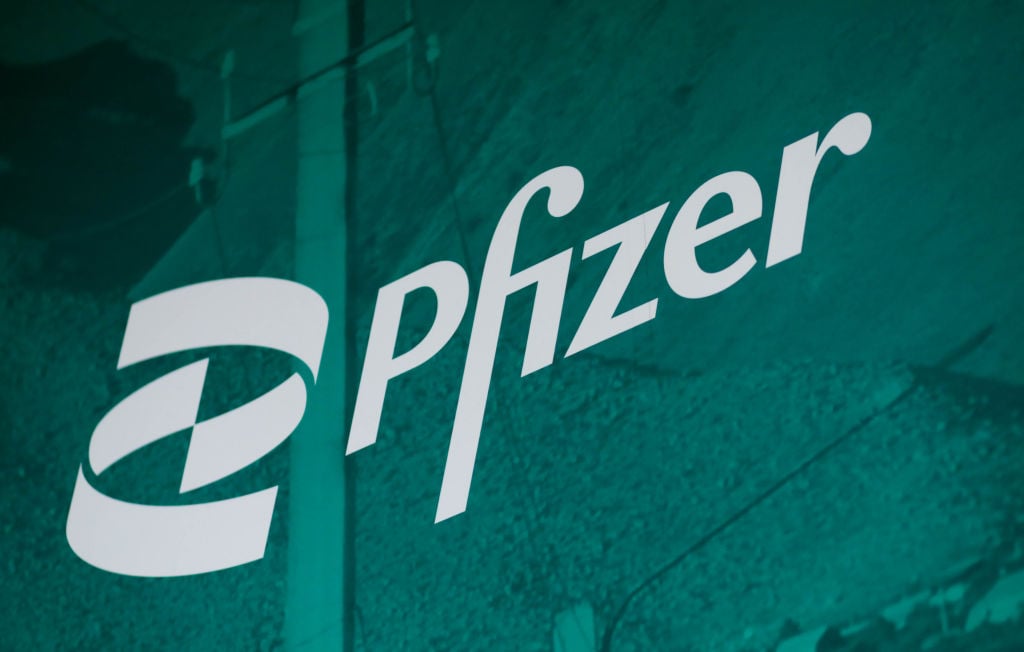Check out the latest Pfizer earnings call transcript.
It's been a long time since Pfizer (PFE +1.61%) shareholders have seen any revenue growth. Product sales peaked in 2010, but the company now has what it needs to begin a long climb to new heights.
Shares of Pfizer outperformed the overall pharma industry by a mile last year. Let's see if a string of new drug approvals can help America's largest pharmaceutical company do it again in 2019 and beyond.

Image source: Getty Images.
Reasons to buy
Pfizer's a big company with lots of pieces moving in different directions. In the years ahead, loss of exclusivity for blockbuster drugs won't weigh as heavily on the company's top line as in years past. In June, Pfizer loses exclusivity for Lyrica, a top-selling blockbuster pain reliever that racked up $3.6 billion in revenue during the first nine months of 2018.
With Lyrica accounting for 9.2% of total revenue, its expiration will take some of the wind out of Pfizer's sails in 2019. Once Lyrica reaches bottom, though, Pfizer will enter what its new CEO, Albert Bourla, says is a period in which it will be virtually free of any losses of exclusivity until 2026.
Luckily, Pfizer has new drugs, and old drugs reaching new patients, that can probably offset the losses and drive total sales to a new all-time high. In October, the Food and Drug Administration approved Talzenna capsules for the treatment of newly diagnosed breast cancer patients who fit a genetic profile that's generally difficult to treat.
During a study leading to Talzenna's approval, the capsules decreased patients' risk of disease progression or death by 46% versus standard chemotherapy. A similar treatment, AstraZeneca's Lynparza, is also approved to treat this group, but only for patients who have already been treated with chemotherapy. That gives Talzenna a shot at adding $1 billion to Pfizer's top line in 2019, and much more thereafter.
Pfizer also earned a huge label expansion for its prostate cancer treatment in 2018, and another is on the way. Xtandi is now available for patients with castration-resistant prostate cancer that hasn't spread, and another expansion to include earlier-stage patients who still respond to hormonal therapy could happen by the end of 2019. That means practically every man diagnosed with prostate cancer could soon be eligible for treatment with Xtandi.

Image source: Getty Images.
In 2018, Pfizer's oral rheumatoid arthritis treatment, Xeljanz, earned approval to treat ulcerative colitis, too. Xeljanz sales surged 31% higher during the first nine months of 2018 versus the prior-year period, to $1.2 billion, and the new indication could allow sales to double in a couple of years.
Pfizer expects to submit 25 applications by 2022, and thinks 15 of them could each add at least $1 billion in annual revenue if approved. That includes tafamidis, a rare-disease drug that produced some encouraging clinical trial results last year.
Cash for shareholders
Pfizer generated a stunning $15.7 billion in free cash flow over the past 12 months, and returning that cash to shareholders is a top priority. Rather than commit to huge increases, the company has steadily raised the dividend payout 125% since 2009. On top of acquiring drugs like Talzenna and Xtandi, Pfizer has used its massive cash flows to reduce its outstanding share count by an impressive 28% since 2010.
At recent prices, Pfizer offers a nice 3.4% yield. And with fewer shares out there, investors can look forward to more steady payout bumps ahead. Over the past year, the company used just 50.6% of the free cash flow that operations produced to meet its dividend obligations.

Image source: Getty Images.
Reasons to be nervous
Pfizer's investments in intellectual property have a pretty good track record. When it comes to facilities and people who operate them, though, that track record becomes embarrassing. Healthcare providers across the country last year suffered shortages of sterile injectable drugs because Pfizer can't seem to fix the problems it inherited from Hospira at a few manufacturing facilities.
The sterile injectables business Pfizer acquired in 2015 added $6 billion in revenue to the top line in 2016, and it finished the third quarter on pace to reach just $5 billion annually. In July and August of 2018, FDA inspectors cited problems with manufacturing facilities that Pfizer knew were troubled when it bought them a few years earlier.
Outside of Pfizer's own operations, the national drug pricing debate could blow up in the company's face. Price hikes are a complicated issue that seems to infuriate everyone. If Pfizer somehow loses the ability to raise prices for successful products, it could lose a reliable source of growth.
A buy now?
Pfizer has gained 18% over the past year while investors shaved 7% from the benchmark S&P 500 index. Despite the recent run-up, it looks like most investors aren't expecting much from Pfizer in the years ahead. At recent prices, the stock trades at just 10.8 times trailing earnings.
Pfizer is priced far below the average S&P 500 stock, which trades at 20.5 times trailing earnings, but it's set up for years of double-digit growth. With most of those profits coming back in the form of dividends and share buybacks, this is one of the best stocks you can buy right now.






